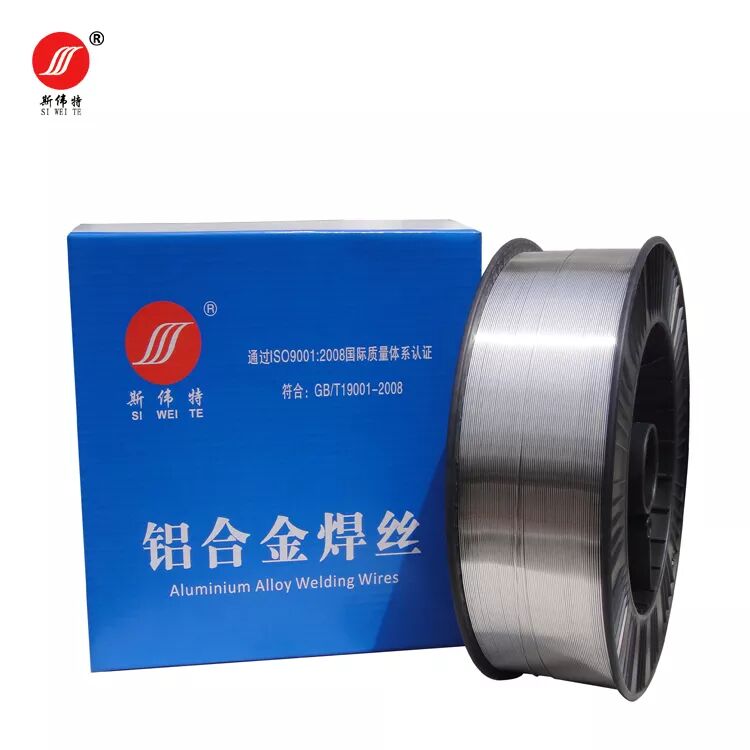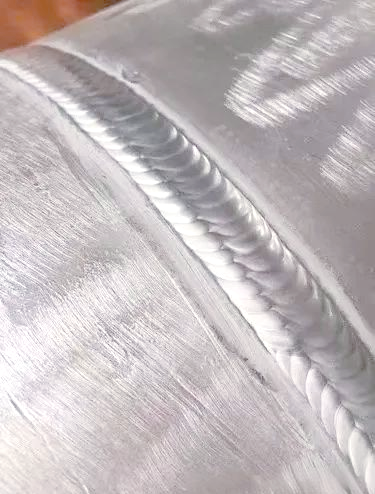So, you want to learn how to weld aluminum? It’s a common goal, but many newcomers find it challenging. Aluminum’s unique properties—namely its high thermal conductivity and tenacious surface oxide layer—require a different approach compared to steel.
But don’t be discouraged! With the right setup, preparation, and knowledge, aluminum welding is a skill you can master. This guide from SWT welding Material Co., Ltd., a trusted manufacturer of aluminum welding wire, will walk you through the essentials every beginner needs to know.
Why is Welding Aluminum Different? Understanding the Challenge
Many people mistakenly think aluminum is “soft” and has a “low melting point.” While it melts at a lower temperature than steel, the real challenges are:
- The Oxide Layer: Aluminum instantly forms a surface oxide layer (Al₂O₃) that has a melting point much higher than the base metal underneath. You need enough heat to break through this layer without melting the entire workpiece.
- Heat Conductivity: Aluminum siphons heat away from the weld zone incredibly fast. This can make it difficult to start a puddle and often requires more power than steel.
Understanding these two factors is the key to solving most aluminum welding problems.
Gear Up: Your Aluminum MIG Welding Setup
A proper setup is 80% of the battle in aluminum MIG welding.
1. The Welding Gun: Push vs. Pull
For aluminum MIG welding, a spool gun is highly recommended for beginners. It feeds the soft aluminum welding wire directly from a small spool on the gun, eliminating common feeding issues.
If a spool gun isn’t available, use a standard MIG gun with a Teflon liner and keep the gun as straight as possible. Remember the golden rule: always use a “push” technique, angling the gun about 10-15 degrees in the direction of travel.
2. Shielding Gas: The Invisible Shield
Use only 100% Argon gas for both MIG and TIG welding aluminum. It provides a stable arc and excellent cleaning action. For advanced applications on thick material, argon-helium mixes are used, but pure argon is the perfect starting point.
Pro Tip: Ensure your gas purity is at least 99.99% (often called “Grade 4.5”). Lower purity can contain moisture, which is a primary cause of porosity (holes in the weld). Also, set the gas flow rate correctly—typically 20 – 30 cubic feet per hour (CFH) for MIG welding aluminum. Too low a flow won’t provide adequate shielding, while too high can create turbulence and draw in contaminants.
3. Solving Wire Feeding Issues the Right Way
If you experience feeding problems:
- Do NOT use a larger contact tip. This causes poor electrical contact and erratic arcing.
- DO use a U-groove drive roll designed for aluminum to prevent crushing the soft wire.
- DO ensure your liner is a smooth Teflon type and that your gun cable isn’t coiled too tightly. Also, check the tension on the drive rolls—too tight and the wire can deform; too loose and it won’t feed properly.
Preparation is Everything: Cleaning Aluminum for Welding
This is the most crucial step that beginners often skip. Any contamination (oil, dirt, oxide) will lead to a failed weld.
- Degrease: Wipe the weld area with a dedicated solvent like acetone or a specialized metal cleaner. Pay extra attention to areas near the weld joint, as oils and greases can seep in.
- Remove the Oxide Layer: Use a stainless steel wire brush that is dedicated to aluminum only. Brush vigorously until the surface is uniformly shiny. For thicker oxide layers, you can also use a chemical etchant specifically formulated for aluminum before brushing.
- Weld Quickly: Cleaned aluminum begins re-oxidizing immediately. Try to weld within a few hours of cleaning for the best results. If you can’t weld right away, cover the cleaned area with a clean, lint-free cloth to minimize contamination.
Choosing the Right Aluminum Welding Wire
This is where quality matters most. Not all filler wires are the same. As a leading aluminum welding wire manufacturer, we recommend understanding these two common types:
- 4043 Aluminum Wire: This is the most general-purpose wire. It is very fluid, works well with 6000-series alloys (common for structural work), and is less sensitive to weld cracking. It produces a gray, anodized finish. It’s also a good choice for welding cast aluminum parts.
- 5356 Aluminum Wire: This wire is stronger and harder than 4043. It is used for welding 5000-series alloys (common in marine applications) and where higher shear strength is required. It provides a brighter, as-welded appearance. It has better corrosion resistance, especially in marine environments, compared to 4043.
Using a high-quality, clean wire from a reputable supplier like [Your Company Name] is essential to prevent introducing porosity and contaminants directly into your weld. Also, match the wire diameter to your application—thicker wires for thicker materials and higher amperage, thinner wires for precision work and lower amperage.
Technique and Finishing the Weld
- Start Your Arc: Begin on a scrap piece or run-on tab to establish a stable arc and puddle. This helps you get a feel for the heat and wire feed speed needed before tackling your actual workpiece.
- Manage Heat: Use a “stitching” or “skip” technique on long welds to control heat input and prevent warping. For thin aluminum sheets, you can also use a heat sink (a piece of copper or another high thermal conductivity metal) attached to the back of the weld area to draw away excess heat.
- Crater Fill: At the end of the weld, don’t just stop and hold the gun. This will burn back the wire and create a crater crack. Use your welder’s “crater fill” function or quickly whip the gun back over the finished crater to fill it in. If your welder doesn’t have a crater fill function, gradually reduce the wire feed speed and amperage as you near the end of the weld to minimize crater formation.
- Travel Speed and Weave: Maintain a consistent travel speed. For MIG welding aluminum, a steady, moderate speed is usually best. When weaving (for wider welds), keep the weave pattern tight and controlled—excessive weaving can lead to uneven heating and potential defects.
Troubleshooting Common Aluminum Welding Problems
Even with good preparation, issues can arise. Here’s how to tackle some frequent ones:
- Porosity: Small holes in the weld. Causes include contaminated base metal or filler wire, impure shielding gas, or excessive moisture. Double-check your cleaning process, gas purity, and wire storage (keep wire in a dry, clean environment).
- Burn-Through: Common on thin aluminum. Reduce amperage, increase travel speed, or use a thinner wire. Also, consider using a backing bar (like a piece of aluminum or copper) to support the weld and prevent melt-through.
- Lack of Fusion: The weld doesn’t properly bond with the base metal. Ensure you’re using enough heat, check that your wire is feeding correctly, and make sure the joint edges are clean and properly prepared.
Conclusion: Your Path to Aluminum Welding Success
Aluminum welding for beginners is about respecting the material’s properties and mastering the process. Remember these key takeaways:
- Get the Setup Right: Use a spool gun or optimized MIG gun, 100% argon (at the correct flow rate), and the correct consumables (drive rolls, liners, contact tips).
- Clean, Clean, Clean: There is no substitute for a perfectly clean workpiece—take your time with degreasing and oxide removal.
- Choose Quality Filler Metal: Your weld can only be as good as the wire you feed into it—opt for reputable brands and store wire properly.
- Practice Good Technique: Use the push technique, manage your heat with proper travel speed and heat control methods, and master crater filling.
- Troubleshoot Methodically: When problems occur, systematically check each aspect of your setup and process to identify and fix the root cause.
By following this guide and using premium materials like SWT’s aluminum welding wire, you’ll be well on your way to producing clean, strong, and professional-looking aluminum welds.
Ready to start your next project with confidence? Explore our range of high-quality, easy-to-feed 4043 and 5356 aluminum welding wire, designed for performance and consistency.





